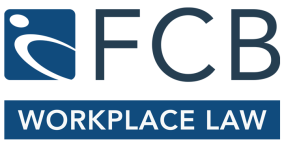ASX-listed Manufacturing Company
FCB has assisted a large national manufacturer to smoothly consolidate three separate sites, with three separate workforces and three separate industrial governance, into a single custom built facility.
Relocating a factory is an extremely complex process in managing the logistics of the move in addition to maintaining production (if possible) and work orders. A key component in any successful manufacturing business is its people. Relocating a workforce as part of a factory relocation is highly stressful and resource intensive exercise. It requires careful planning or it risks the loss of the workforce, a huge redundancy pay bill or alternatively it may present an opportunity for disaffected employees, or Unions, to lay a series of claims on the business in return for not disrupting the whole relocation process.
The background
One of the 3 sites was highly unionised and contained generous conditions that were negotiated over many rounds of enterprise agreement negotiations, spanning over 15 years. The conditions were overly restrictive and if applied across the new site, it would have substantially restricted the business’ future production flexibility.
Our role
We provided key advice to our client to help it oppose the transfer of the enterprise agreement across to the new site, including defending the relocation in an application before the Fair Work Commission. The lack of portability in the enterprise agreement to the new site was a double edged sword for the business: it allowed it to avoid the imposition of overly restrictive conditions across the new site however it presented the workforce at the old site with a strong basis to refuse to relocate and instead pursue a redundancy package and separation. If the latter were to occur it would effectively shut down production at the new site and present a huge outlay in termination payments.
To avoid the latter situation FCB worked with the client to:
- undertake extensive consultation and communication with the workforce to ensure that positive messaging was reinforced and any faulty union logic or legal assertions were properly answered and corrected
- offer short term bridging conditions for the transferring employees to “trial the new site” for a set period in order to encourage the workforce transfer
- commence bargaining at the new site to involve the transferring workforce to help establish the new working conditions with greater production flexibility.
The benefits
The benefits of deploying the trial period for the transferring workforce were:
- the trial would, in all probability, remove a lot of the negative messaging and fear being spread as to the working conditions at the new site, including: layout of the new site, travelling times, access to transport and impacts on family arrangements
- to encourage employees that had undertaken the trial that they should continue with their employment – essentially allow for them to recalibrate the “norms” for their work
- to allow for the continuation of production and training of employees coming into the site from other locations
- to allow the employer to positively broadcast to its workforce the “risk free” option of the trail transfer by the arrangement would not prejudicing their severance entitlements- if they ultimately chose to not stay.
The outcome
Whilst the business lost a few workers as part of the transfer it has nonetheless succeeded in the transition including hitting key relocation performance targets of:
- zero lost time due to any lawful or unlawful industrial action;
- no adverse publicity, picketing or damage to the brand; and
- most importantly, no loss of production or the imposition of restrictions on future production flexibility.
One of our client’s key to success was their emphasis on strategic planning and clearly understanding their industrial and employment rights and options. Having a strong industrial relations partner gave the business the right tools to make important decisions on the workforce integration.

























